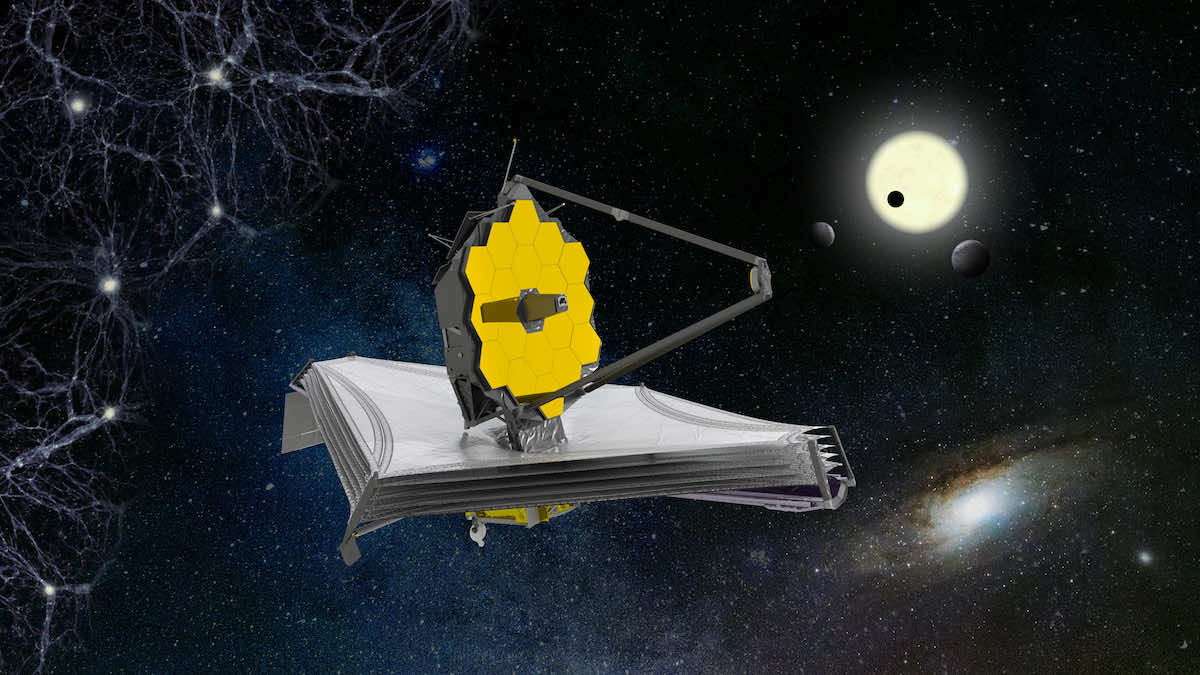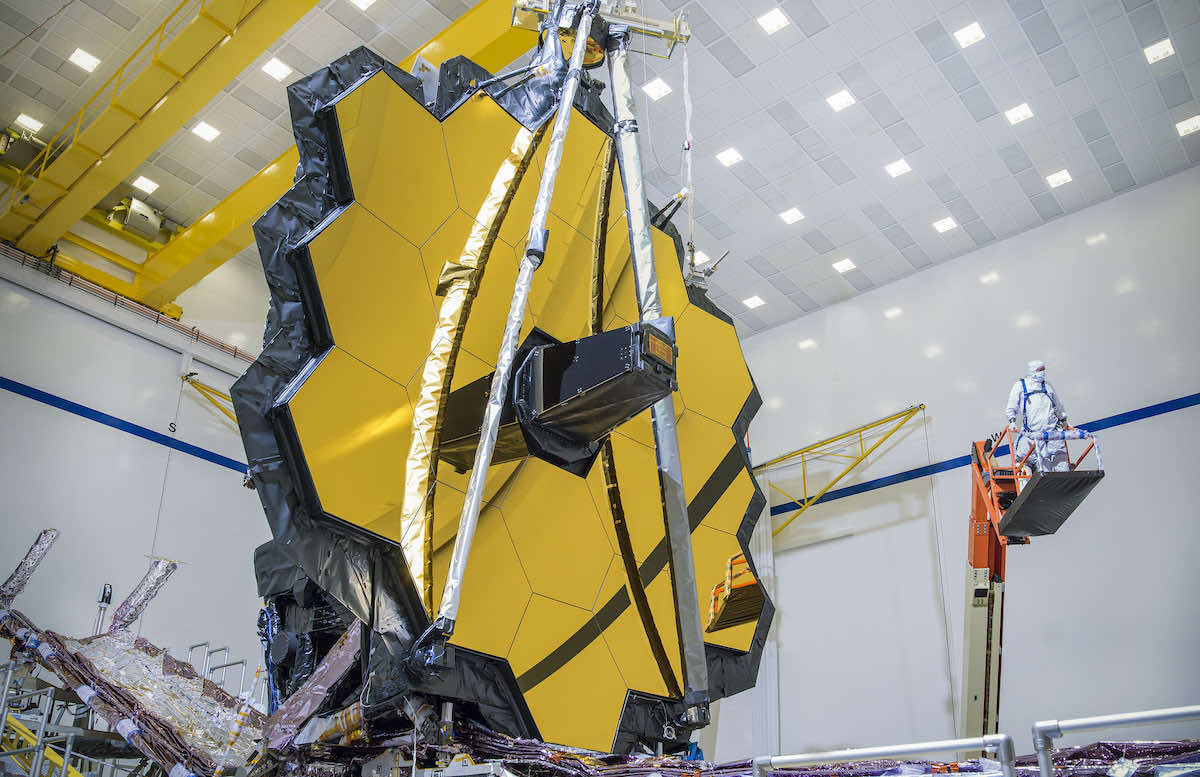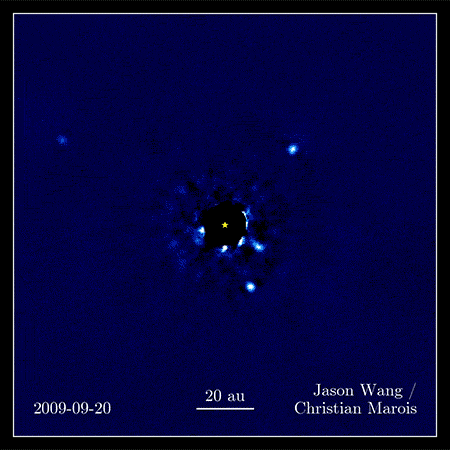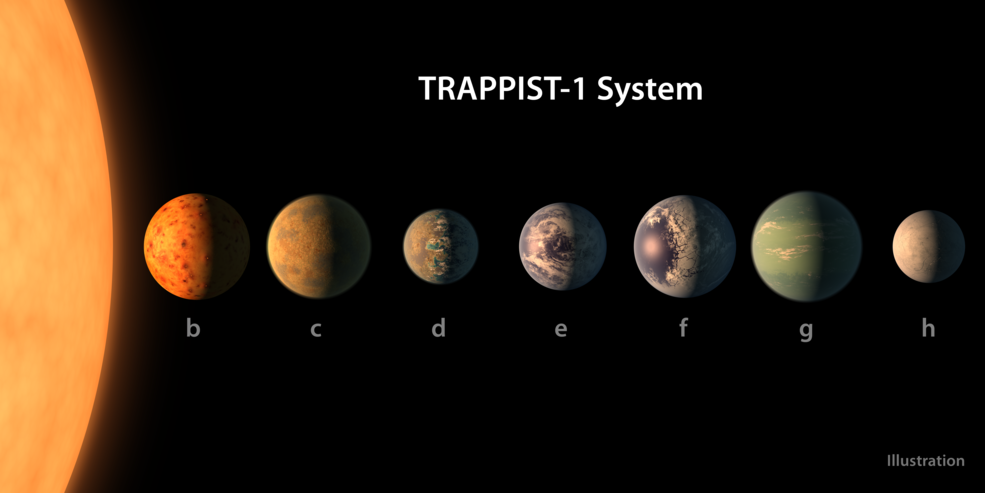
Beginning next year, the James Webb Space Telescope will scan a sampling of the nearly 5,000 alien worlds discovered around other stars to help astronomers identify which of the rocky planets might have atmospheres that could sustain life.
When scientists starting designing Webb in the 1990s, astronomers had detected only a handful of planets outside our solar system. Now, thanks largely to NASA’s retired Kepler planet-hunting observatory, there are more than 4,800 confirmed exoplanets in the catalog.
Webb’s numerous launch delays and cost overruns have culminated in the mission’s scheduled launch Saturday from French Guiana. A European Ariane 5 rocket will dispatch the 13,584-pound (6,161.4-kilogram) observatory toward an orbit around the L2 Lagrange point, a gravitationally-neutral location four times farther from the Earth than the moon.
Astronomers conceived of the mission that would become Webb in 1996, when officials hoped the mission might be on the launch pad in 2007. By 2003, the launch date had slipped to 2011, then it delayed to 2014, 2018, 2019, and 2020.
The field of astronomy has changed since the 1990s. The construction of more powerful ground-based telescopes, and 31 years of observations with the Hubble Space Telescope, have made a steady cadence of discoveries as Webb was stuck on planet Earth.
The drive to find exoplanets shifted into high gear with the launch of NASA’s Kepler telescope in 2009. More than half of the confirmed alien worlds known today were detected by Kepler.
“If launch was in 2011, we would have only had a handful of planets to explore,” said Néstor Espinoza, an astronomer at the Space Telescope Science Institute, where Webb will be controlled after launch. “Now we have 4,000 planets to choose from.”

Webb, a successor to Hubble, is the largest space telescope in history, with a primary mirror spanning 21.3 feet (6.5 meters) in diameter. A five-layer sunshield will unfurl to the size of a tennis court in the first week after launch, allowing Webb’s telescope and four science instruments to begin cooling to a temperature of minus 388 degrees Fahrenheit, or 40 degrees above absolute zero.
Hubble is sensitive to cosmic light sources in ultraviolet, visible, and near-infrared wavelengths. Webb will focus squarely on the infrared universe, with an edge of its observing band at the red end of the visible spectrum.
The new telescope is 100 times more powerful than Hubble. Although smaller than many ground-based observatories, Webb will fly above the shimmer effect of Earth’s atmosphere, which also absorbs much if the faint infrared light from faraway stars and galaxies.
Mark McCaughrean, a Webb interdisciplinary scientist at the European Space Agency, said exoplanet research is one of the key pillars of the mission, alongside searching for the universe’s first galaxies, and probing star-forming regions in our own Milky Way galaxy.
“What’s amazing about this machine is that even though it wasn’t initially designed for that kind of science, it’s such a capable observatory,” said McCaughrean, who has worked on the Webb mission since 1998. “It’s got so many modes, and so many filters, and so many gratings, and spectroscopy mixed with imaging, that it’s a perfect machine for the next step in studying planets around other stars and measuring their atmospheres.”
Webb, with a relatively narrow field of view, won’t seek to add to the list of confirmed exoplanets. Instead, it will follow up on discoveries made by missions like Kepler and NASA’s Transiting Exoplanet Survey Satellite, which launched in 2018.
The TESS mission is surveying the entire sky to find planets around relatively bright, nearby stars — perfect candidates for Webb observations.
John Grunsfeld, a former astronaut, led NASA’s science mission directorate from 2012 until 2016. In that capacity, he oversaw the selection of the TESS mission in a competition with other astronomy proposals for agency funding.
“I selected the Transiting Exoplanet Survey Satellite, in part, because it would find targets for the the James Webb Space Telescope,” Grunsfeld said. “So we now have a catalog of nearby transiting exoplanets that James Webb can interrogate.”

“We know, basically, that if you look up at the night sky, every star has a solar system around it,” Grunsfeld said.
Webb is set to begin science operations six months after launch, and one of the top priority targets for the new observatory will be the TRAPPIST-1 planetary system 39 light years away, home to at least seven confirmed rocky worlds roughly the size of Earth. Three of the planets orbit their host star, a red dwarf smaller than the sun, in the so-called habitable zone, where liquid water might be present.
With Webb, astronomers will watch as planets pass in front of their parent stars. The transits temporarily blot out a portion of the star’s light from reaching the telescope.
“Some of the starlight will go through the atmosphere of that planet on its way to our telescope,” said John Mather, Webb’s senior project scientist at NASA’s Goddard Space Flight Center in Maryland. “We can analyze that atmosphere, if there is one, and say what’s in it.”
“You will be able to detect stuff like water, carbon dioxide, ozone in these planets,” Espinoza said.
Webb’s instruments will split the starlight into spectra, like a rain drop does with sunlight. Other telescopes have used the same technique to measure the composition of atmospheres of giant gaseous planets, similar to Jupiter or Neptune.
Astronomers will employ Webb to do the same for smaller planets with solid surfaces like Earth’s.
“There are some that are temperate, and a big questions is if some of them have atmospheres,” said Klaus Pontoppidan, Webb project scientist at the Space Telescope Science Institute.
Water, in particular, could be detectable in the atmospheres of exoplanets with a huge infrared telescope like Webb. If they don’t have atmospheres, Webb might be able to tell scientists about the composition of the planets’ rocky surfaces — a kind of long-distance geology, Espinoza said.

Webb also has the sensitivity to directly image planets the size of Neptune around other stars, according to Espinoza. Current observatories can image planets the size of Jupiter.
The transit observation method only catches a small fraction of exoplanets that happen to orbit their star in a path that lines up with our solar system. But the method allows scientists to use starlight to tease out details about planetary atmospheres.
“Until recently, the only planetary system known was our own solar system,” said Antonella Nota, ESA’s Webb project scientist.
“Are we alone? Is Earth unique? Do we have other planets out there that can host life? (These are) very ambitions questions that speak to all of us. So Webb study in detail the atmospheres of these exoplanets.”
Closer to home, Webb will point toward Jupiter’s moon Europa, which has a global ocean of liquid water buried beneath an icy crust. Webb could confirm a tentative detection made by Hubble of water plumes erupting through Europa’s ice shell.
The remote observations with Webb will help scientists prepare for the arrival of NASA’s Europa Clipper mission at Jupiter. That robot probe is set for launch in 2024 and will repeatedly fly by Europa with a sophisticated instrument suite to study the moon’s geology and environment.
Webb will also gather data on the climate of Mars, the structure and moons of Uranus and Neptune, and the population of frozen miniature worlds in the Kuiper Belt at the outer frontier of our solar system.
“It’s been a long road to get where we are,” said Heidi Hammel, a Webb interdisciplinary scientist at the Association of Universities for Research in Astronomy. “Even so, we planned such a revolutionary telescope that it has stood the test of this time.”
Email the author.
Follow Stephen Clark on Twitter: @StephenClark1.
